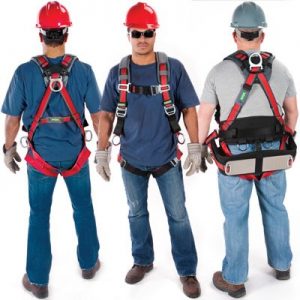When choosing a safety harness, it is critical to understand the specific requirements of the task at hand. OSHA defines a body harness as a device designed to distribute fall arrest forces over critical areas of the body. In contrast, safety belts are straps that secure around the waist and connect to other components. Body belts are not permitted in personal fall arrest systems, according to OSHA.

Deciding which harness to purchase for your specific needs can become daunting due to all the choices available today — ensuring that the harnesses you get are appropriate to the workplace hazards your employees would encounter. Here are some things to consider when picking the suitable safety harness for you and your company.
The right harness for the job
A critical consideration is determining whether the nature of the work primarily entails restraint or arrest. Fall arrest harnesses become essential for those frequently exposed to fall hazards. This understanding is necessary for tailoring the level of protection to the specific demands of the job.
The force applied to the body during a fall must not exceed 1,800 lbs. This requirement emphasizes the importance of the harness in distributing impact forces across the body, particularly in critical areas like the upper legs, groin, and chest. The correct harness should distribute the impact force evenly throughout your body to reduce the risk of injury.
Quality and features
When choosing the right safety harness, price and comfort are inextricably linked. While more expensive, premium harnesses include features such as padding at common points of contact, multiple points of adjustment, and additional webbing stretch. These would aid in distributing impact forces on your body in the event of a fall and make prolonged use of the harness less cumbersome.
You must consider these things when shopping for a safety harness. For more information, visit us here at KC Supply today.


